Roblox is huge, which means even small hiccups can feel like the whole platform is broken. This guide gives you quick ways to confirm whether Roblox is down right now, explains what common errors actually mean, and shows you practical fixes you can try before assuming it’s a global outage.
Quick Answer: Is Roblox Down Right Now?
Before you change settings or reinstall anything, verify whether there’s a platform issue. The fastest route is to check Roblox’s official status page for live incidents and maintenance notices, then compare it with a third-party uptime tracker or social chatter for context.
If you see a confirmed outage, there’s nothing for you to “fix” locally—just wait for service to be restored. If status pages show green across the board yet your app isn’t working, the problem is likely local: your device, network route, or account/session.
How to Check Roblox Server Status (Fast & Reliable)
Roblox issues are easiest to solve when you know where to look first. Start with authoritative sources, then use external signals to avoid false alarms and to gauge how widespread a problem might be in your region or on your ISP.
- Official Roblox status page – This is the single source of truth for platform-wide incidents, partial outages, ongoing maintenance, and resolved events. Check component-level notices (Authentication, Voice, Experiences, Studio, etc.).
- Third-party status trackers – Sites that monitor HTTP/HTTPS endpoints and crowd reports can reveal spikes in “Roblox not working” complaints. Treat these as supplemental, not definitive.
- Community signals – Social platforms, developer forums, and subreddit threads can surface patterns like “can’t join experiences,” “voice chat down,” or “purchases pending.” Cross-check against the official page to confirm scope.
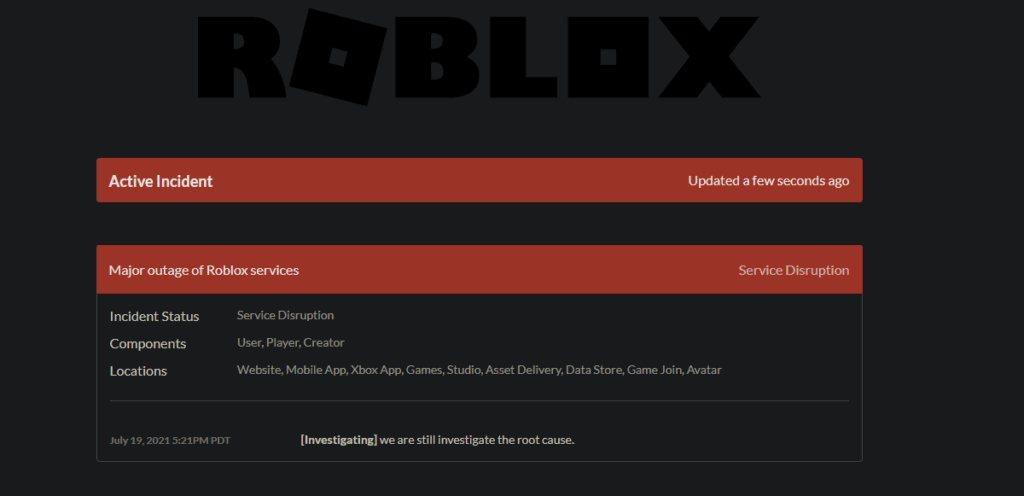
If these sources show normal operation, yet you still can’t play, proceed to local troubleshooting. Most “Roblox down for me” cases aren’t global outages—they’re network path glitches, device cache issues, or account/session problems.
Common Symptoms When Roblox Is Really Down
Recognizing platform-side issues helps you avoid unnecessary fixes. The following patterns typically align with service incidents, not your device:
- Login loops or timeouts (“An error occurred while starting Roblox” or “Unable to verify”).
- Joining experiences stalls (stuck on “Starting Roblox” or “Connecting to Experience”).
- Purchases or inventory updates are delayed (Robux processing lag, avatar items not appearing).
- Chat/Voice features are unavailable even though your account meets requirements.
- Widespread reports across multiple regions, platforms (web, iOS, Android), and ISPs.
When multiple components misbehave at once—authentication, experiences, and the web catalog—it almost always points to an upstream issue rather than your phone or Wi-Fi.
Error Codes During Outages (and What They Mean)
Even during platform incidents, Roblox still surfaces error codes that help you reason about what’s broken. These are the ones you’ll most often see around outages, maintenance, or stressed services.
Error Code 529 – Service Unavailable / Maintenance
This is the “classic” outage-adjacent code. It often shows up when servers are under maintenance or temporarily unable to handle requests. If you get 529 repeatedly while status pages show an incident, your best move is to wait.
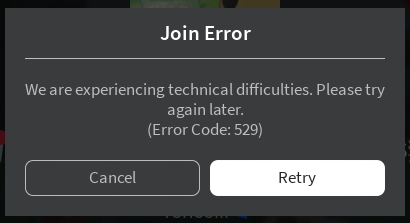
Error Code 277/279 – Connection Issues
These suggest problems establishing or sustaining a connection to game servers. During partial outages, you’ll see more 277/279 because matchmaking or region clusters are unstable. If the status is green, it can also indicate packet loss or blocked ports on your network.
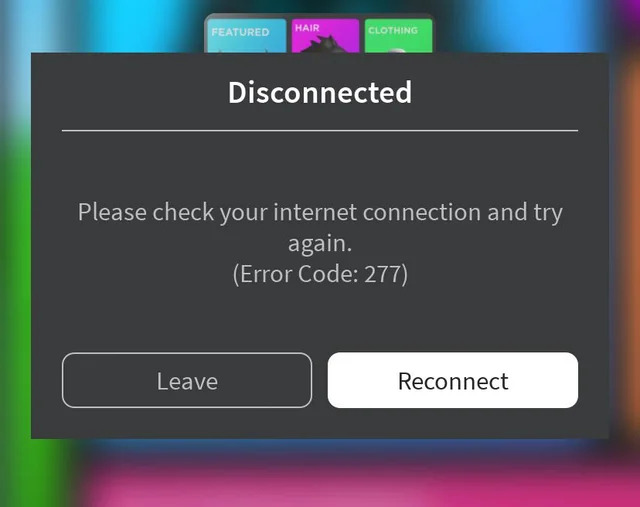
Error Code 268 – Kicked by Server
This appears when the server ends your session—sometimes due to integrity checks or connectivity flaps. It can spike during incidents, but also shows up when a local firewall, VPN configuration, or router QoS interferes with stable sessions.

Error Code 103 – Content Age/Permissions
Often misread as “Roblox down,” this one generally relates to privacy settings, age restrictions, or cross-platform content rules. If 103 is the only issue you’re seeing while others can play, it’s not an outage—check account settings and experience permissions.
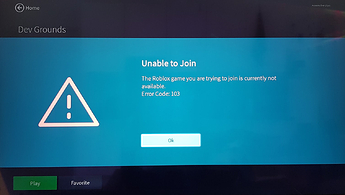
When you see one error on every experience and across multiple devices on the same network, look upstream first. When a code only appears for a specific experience or account, focus on local fixes and permissions.
If Servers Are Fine, Troubleshoot Your Side (Step-by-Step)
If server status is normal but Roblox isn’t working for you, work through these local fixes in order. This flow minimizes guesswork and avoids heavy resets unless they’re necessary.
First, confirm the basics with a brief transition. Many Roblox error messages look similar, so start with connectivity, caching, and session health before changing advanced settings. These steps are safe, reversible, and solve the majority of “not loading” or “can’t join experience” cases.
- Restart the app and your device. This clears transient memory states and stuck processes.
- Toggle your connection. Switch from Wi-Fi to cellular or vice versa to isolate router or ISP issues.
- Power-cycle your router. Unplug for 30 seconds, then reconnect. This forces new routes and fresh DNS.
- Clear Roblox cache/data (app) or browser cache (web). A corrupted cache can cause perpetual loading screens.
- Update Roblox and your OS/browser. Outdated clients fail more often after backend updates.
- Disable ad blockers, privacy filters, or aggressive DNS. Over-zealous filters can break logins and purchases.
- Try a different DNS resolver. Switching from your ISP’s default to a public resolver can fix bad routes.
- Check account restrictions and privacy settings. For 103-type issues, verify age, content settings, and platform permissions.
- Review firewall and router rules. Close or relax the rules you recently added that might block Roblox ports.
If the problem disappears on cellular but not on home Wi-Fi, your router, DNS, or ISP path is the likely culprit. If the problem disappears on a second device using the same network, reinstall or reset the app on the original device.
Network Issues That Look Like an Outage (Public Wi-Fi, School/Work Filters)
It’s common for mobile players to experience “Roblox not working” while official status pages show green. Public hotspots, campus networks, and office connections can throttle or block traffic that interactive experiences rely on, creating an outage illusion.
Before you assume Roblox is down, clarify whether your network environment is adding friction. Captive portals and filtering appliances frequently rate-limit or sandbox traffic, while carrier NAT and regional routing quirks can cause dropped handshakes. These are local path problems, not global incidents.
If you prefer to use a VPN on iOS or Android to stabilize routes on congested or filtered networks, you can try BearVPN. It offers quick connect and basic privacy for mobile, which may help on flaky public Wi-Fi or when your carrier path is unstable. Use VPNs only where permitted, and note that a VPN cannot guarantee access to any specific site or experience.
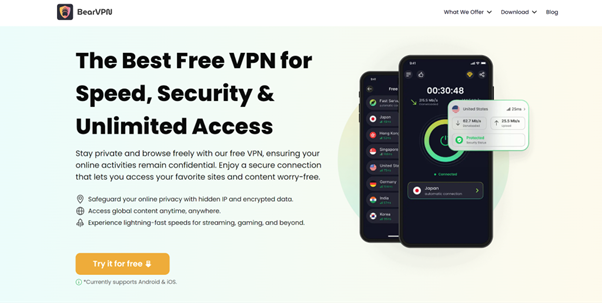
What “Regional” Roblox Problems Look Like (Not Global, But Feels Like It)
Sometimes a feature looks “down” because it is being rolled out gradually, restricted by age or region, or temporarily limited due to policy changes. Voice chat availability, chat moderation pathways, or payment methods can fluctuate by country, which users sometimes interpret as platform downtime.
A simple way to test this: ask a friend in another region or on a different ISP to try the same experience at the same time. If they can join while you cannot—and server status is normal—you’re likely hitting a regional policy or ISP-level routing issue.
You can also scan recent community threads to see whether others in the same country or city report matching symptoms. If reports cluster around a single carrier or local ISP, contact that provider or switch networks temporarily to confirm.
Why Outages Happen (Scale, Maintenance, and Incidents)
Roblox manages enormous concurrency across devices, geographies, and experience types. When one subsystem falters—authentication, matchmaking, social/voice, inventory—ripple effects can create confusing error cascades. This is why you may see 529 for some users, while others only get 277/279.
Planned maintenance windows are usually brief and announced on the status page. Unplanned incidents can be longer, particularly when they involve upstream providers, database integrity checks, or rollback procedures. Broad, multi-component incidents are rare but memorable, and they’re always followed by a post-incident review.
The practical lesson for you: rely on verified status before attempting heavy fixes, and keep your local environment clean so you can quickly rule out device or router issues.
Advanced Checks (Only If Basics Didn’t Help)
If you still see “Roblox not loading” or “can’t join experience” after completing the basics and verifying server status, try these targeted checks. They’re more technical but can save you from a full reset.
Before diving into these, make sure you’ve already tested a different network and cleared caches. Advanced steps help most when you’ve eliminated routine causes and you need precise confirmation that routing, DNS, or session tokens are to blame.
- Flush DNS and renew IP (on desktop; on mobile, toggling Airplane Mode or network types achieves a similar result).
- Test a different DNS provider for 24 hours to see if timeouts disappear.
- Temporarily remove custom profiles (MDM, enterprise VPN, or firewall apps) that might intercept traffic.
- Check date/time and certificate stores; skewed clocks break secure handshakes and cause login failures.
- Create a fresh user profile on the device to rule out profile-level corruption or conflicting extensions.
- Reinstall Roblox only after the above; it’s effective for corrupted assets, but it should be a last resort.
If none of this helps and no outage is reported, the issue may be specific to a particular experience (e.g., a recent update or script change). Try joining two or three unrelated, popular experiences; if only one fails, contact that developer via the experience page.
FAQs About “Is Roblox Down?”
1. Is Roblox down right now?
Check the official status page first. If an incident is listed, it’s server-side and not fixable by changing your settings. If the status is normal, proceed with the local troubleshooting steps in this guide.
2. How long will Roblox be down?
Outage duration depends on the incident. Minor blips can resolve in minutes; complex incidents or maintenance windows may last longer. The status page typically updates when mitigation is in progress and when issues are resolved.
3. Why do I see Error Code 529/277/279/268/103?
529 often indicates maintenance or service unavailability. 277/279 suggest connectivity issues. 268 points to session integrity problems. 103 usually relates to permissions or age settings. Match the code to the corresponding fixes in this guide.
4. How do I check Roblox server status and outage history?
Use the official status page for real-time and historical incidents. Third-party monitors help give additional color, but always treat them as secondary.
5. Is Roblox getting shut down?
This rumor surfaces regularly. If you only see chatter without any official confirmation, assume it’s false. Trust the official status page and Roblox news channels for accurate announcements.
Final Thoughts
Large platforms occasionally go down. The trick is knowing how to tell a true Roblox outage from a local glitch and how to fix the latter quickly. With the checks above—status first, local steps second—you’ll spend less time guessing and more time playing.



